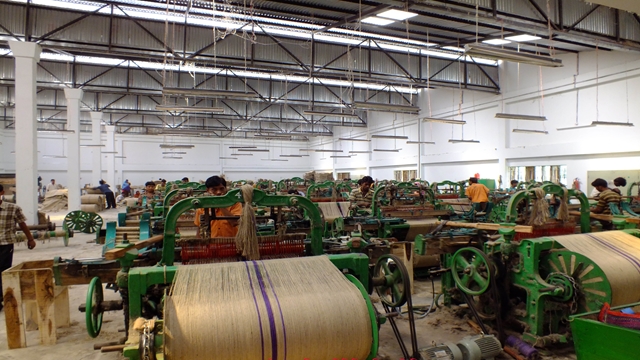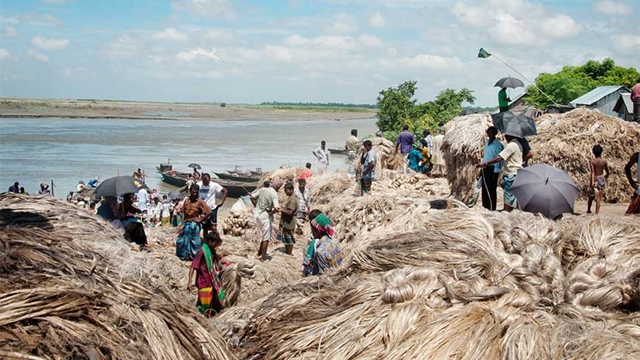SAM
Published:2018-03-08 16:32:21 BdST
Jute production doubled since independence
FT ONLINE
The country’s jute production witnessed nearly a hundred percent increase since the independence. The production of the most affordable natural fibre rose from over 42 lakh bales in 1971-72 to over 82 lakh bales in the last fiscal year (2016-17).
However, Jute production witnessed 8 per cent increase in 2017 comparing previous year, said State Minister for Textiles and Jute Mirza Azam
The state minister informed that farmers produced 9.2 million bales of jute in 2017 while it was 5 million bales in 2016.
The jute sector is currently producing 240 types of jute products, Mirza Azam said on Wednesday.
The junior minister came up with the information while addressing a seminar at the Dhaka Chamber of Commerce & Industry (DCCI) auditorium on Wednesday.
The DCCI organised the seminar, titled 'Diversification of jute for the development of jute industry' in collaboration with Ministry of Textiles and Jute.
State Minister said that about 40 million people in Bangladesh are directly or indirectly involved with jute sector.
He called upon the entrepreneurs to make jute bags at a competitive price so that people could willingly use jute bags instead of polythene bag.
DCCI President Abul Kasem Khan, in his welcome address urged for a 'Jute Pulp Paper Act' soon.
He also informed that the world market for jute bags will reach US$2.6 billion by 2022. Bangladesh can use this opportunity.
Dr. Hossain Zillur Rahman, a former Adviser to the Caretaker Government and Executive Chairman of Power and Participation Research Centre (PPRC), described jute sector as the new growth driver of our economy where jute is not only about past glory but also a golden future.
Dr. Md. Abul Kalam Azad, Director, Jute Research Institute, Director General of Jute Department Shamsul Alam, Secretary of Bangladesh Jute Association, among others, took part in the open discussion session.

What is more heartening is the increased production that came mostly from better breeds and farm management rather than acreage expansion. While jute acreage increased only marginally over the past four decades, its yield a remarkably significant rise due mainly to better crop management, inputs, better breeds and quality seeds.
Bangladeshi scientists in recent years decoded the genetic mapping of both tossa and deshi (local) jute opening up opportunity to develop better quality fibres.
The fibres are off-white to brown, and one to four metres (three to 13 feet) long. Jute is also called “the golden fibre” for its colour and high cash value. The suitable climate for growing jute (warm and wet) is offered by the monsoon climate. Temperatures from 20˚C to 40˚C and relative humidity of 70-80% are favourable for successful cultivation.
Jute requires 5-8 cm of rainfall weekly, and more during the sowing time.
The importance of the jute sector to the Bangladesh economy, in particular, cannot be over-stated, it is a major cash crop for over three million small farm households, the largest industry, producing about one-third of manufacturing output, and the largest agricultural export commodity in Bangladesh. The livelihood of about 25 million people is dependent on jute – related activities in agriculture, domestic marketing, manufacturing and trade.
It is one of the few crops which can be grown in the monsoon season, and can be rotated with rice to restore the soil fertility and structure. The leaves of jute plants enrich the fertility of the soil for sustained agriculture, and have good nutrition value as vegetables.
Jute fibre is 100 percent bio-degradable and recyclable and thus environmentally friendly.
Unauthorized use or reproduction of The Finance Today content for commercial purposes is strictly prohibited.


